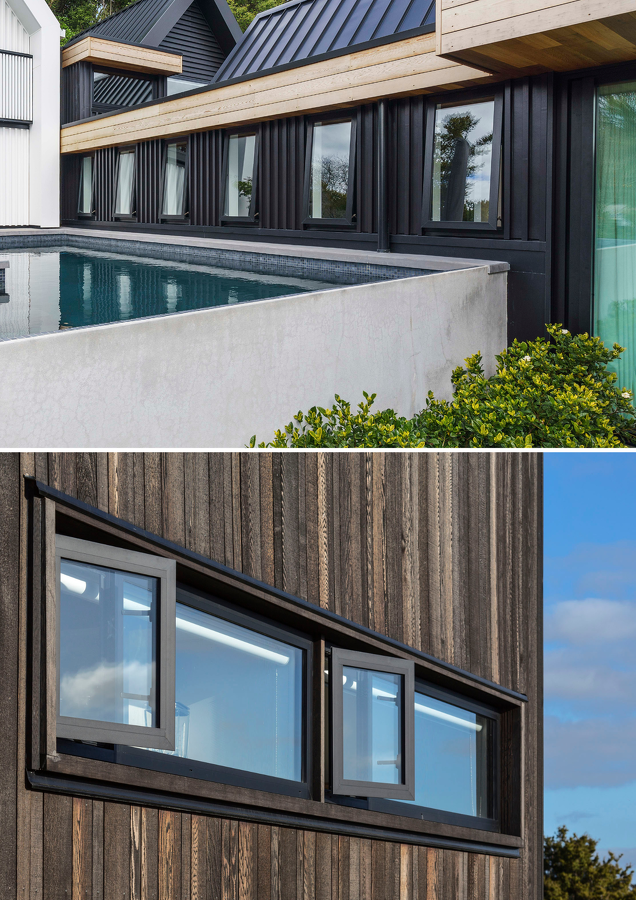Awning vs. Casement Windows: What's the difference?
Date: 9 Feb 2023
Awning and casement— practical, easy to use, and stylish hinged windows, they both allow for opening and airflow into the home or building and can suit a range of budgets and designs.
Awning and casement windows both open using a crank system, meaning that you open and close them manually using a crank handle mechanism. This system makes them very easy to open and close, making them a great window option in placements that are tricky to reach. Awning and casement windows open fully outward to allow for increased natural light and ventilation into the home.
Both awning and casement windows require less glazing than other window opening options like sliding and bi-folding windows— providing less obstruction to much-desired views.
Both of our awning and casement windows have passive ventilation system options which aid in using the window openings to bring fresh air into the home whilst letting the dry air out.
Such similarities can make awning and casement windows hard to differentiate, although they do share some unique features and characteristics that provide differentiating benefits and best applications.
Awning windows
Awning windows our hinged window option where the hinge at the top of the window and opens from the bottom— meaning that the window swings upwards when opened and gives the window a sloped surface that directs rain and other moisture away from the window opening. It is most common for awning windows to be greater in width than height.
Benefits & best applications
- The ever-changing New Zealand weather can often make awning windows a smart choice. This is because even when the unpredicted downpour passes through, you can rest assured that even when left open, the awning window will direct the rain and moisture away from your home. Making awning windows a great choice for projects where it is desired for a window to be left open for maximum ventilation the majority of the time, even when it is raining outside.
- Awning windows are best suited for window openings that are greater in width than height, but to achieve increased height, there is an option to stack multiple awning windows and/or picture windows to fit the desired window opening.
- The most suited applications for awning windows are bedrooms and bathrooms.
Casement windows
Casement windows our other hinged window option where the hinge sits on the side of the window frame, allowing it to swing open to either the left or right. This makes the opening of casement windows very similar to that of a standard door. It is most common for casement windows to be greater in height than width.
Benefits & best applications
- The side-opening nature of casement windows directs air inwards, offering maximum airflow and ventilation into the home. Making casement windows an excellent choice for projects where topmost ventilation is desired.
- We also offer French casements, which consist of no centre post— offering a greater opening.
- Casement windows are best suited to tall window applications.
- The history of casement windows dates back to Georgian, Victorian, and Edwardian architecture— making them a great option if you're trying to achieve antique or vintage style and design (i.e. cottages).
- Most suited applications for casement windows are living room areas and bathrooms.
Although awning and casement windows are both very versatile window options and can be used in various locations throughout a home. We recommend that they are not used where the windows open to pedestrian areas due to their projecting nature. And for this reason, enough exterior space must be available for them to open outward completely. Make sure to pay close attention to trees or bushes outside the window that may prevent it from opening entirely.
Undeniably, both windows are exceptionally similar, it all comes down to your space and preference. If you're looking to the maximise natural light and airflow of your upcoming project with our awning and or casement windows, get in touch with us and we will use our expertise to advise the best option for you.

